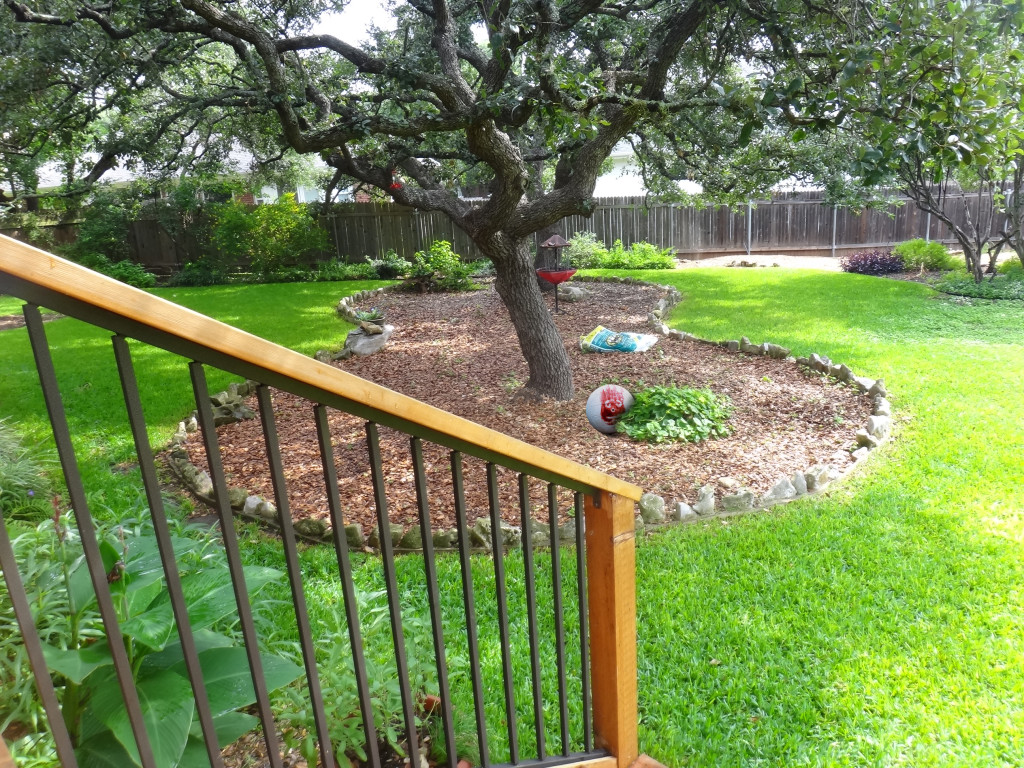
I will start with a design challenge I have recently completed.
My client had lived with this floating ‘peanut’ bed for some time and was ready for a change…
…a deserted island in an ocean of grass.

This garden had some great bones and great oaks, the layout was just lacking purpose, rationale and flow.
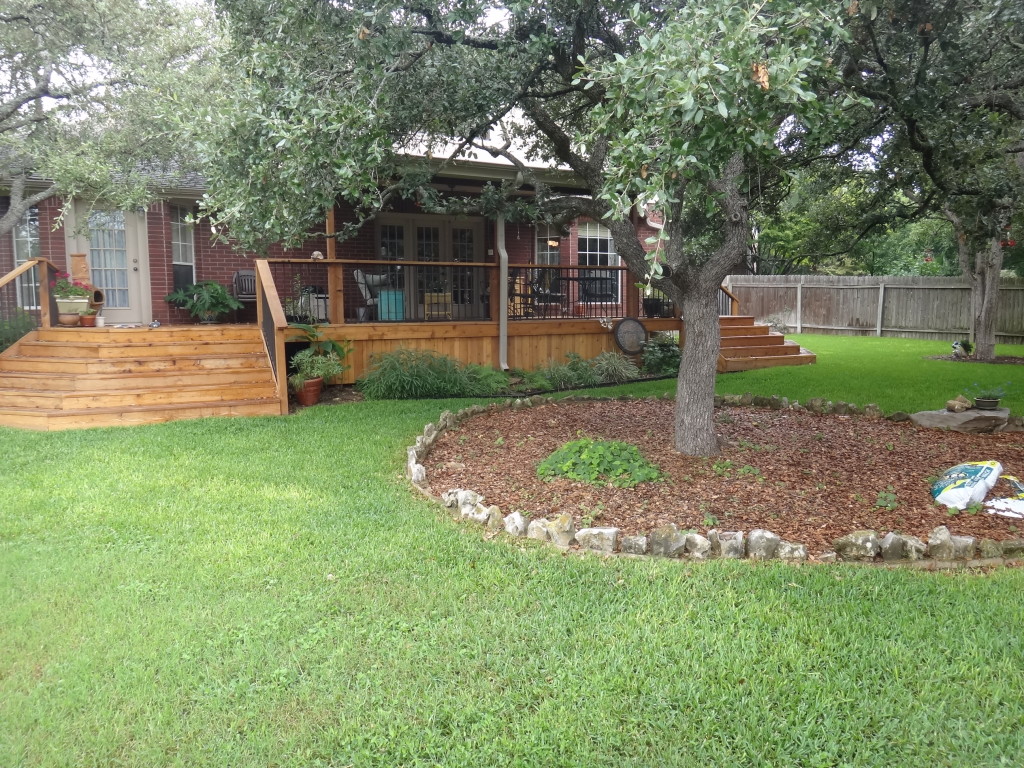
A recently refurbished back deck was in a spacial war with the encroaching peanut, a peanut that was lined with small ‘mortared’ chunks of limestone and holy rocks…what is this obsession with concreting things into a landscape?
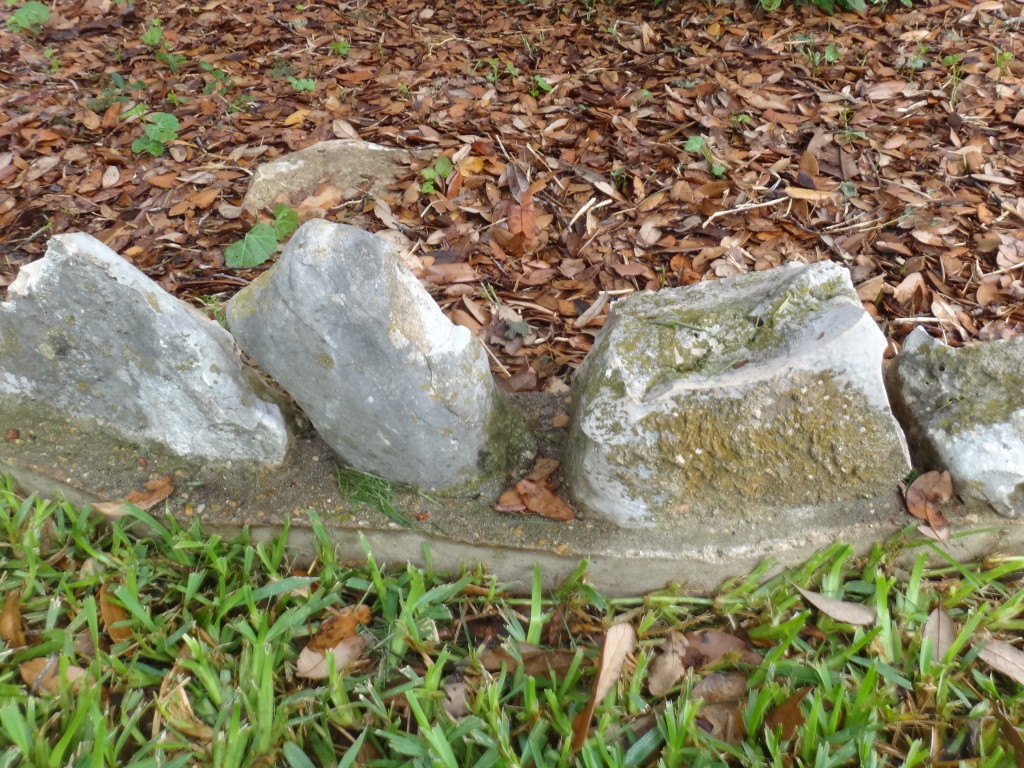
To make matters worse, the mortar that was holding these small rocks solidly above ground had to be about a foot deep. Oh yes, I said a foot deep.

They were like little limestone icebergs, small above ground but with enough concrete below to half fill a dumpster and keep my crew busy for half a day. They were the first thing on my sledgehammers ‘things to hit’ list.
The second thing I wanted to address was the integration of the decking steps into the landscape to visually and functionally give them purpose and anchor them into the new scheme.
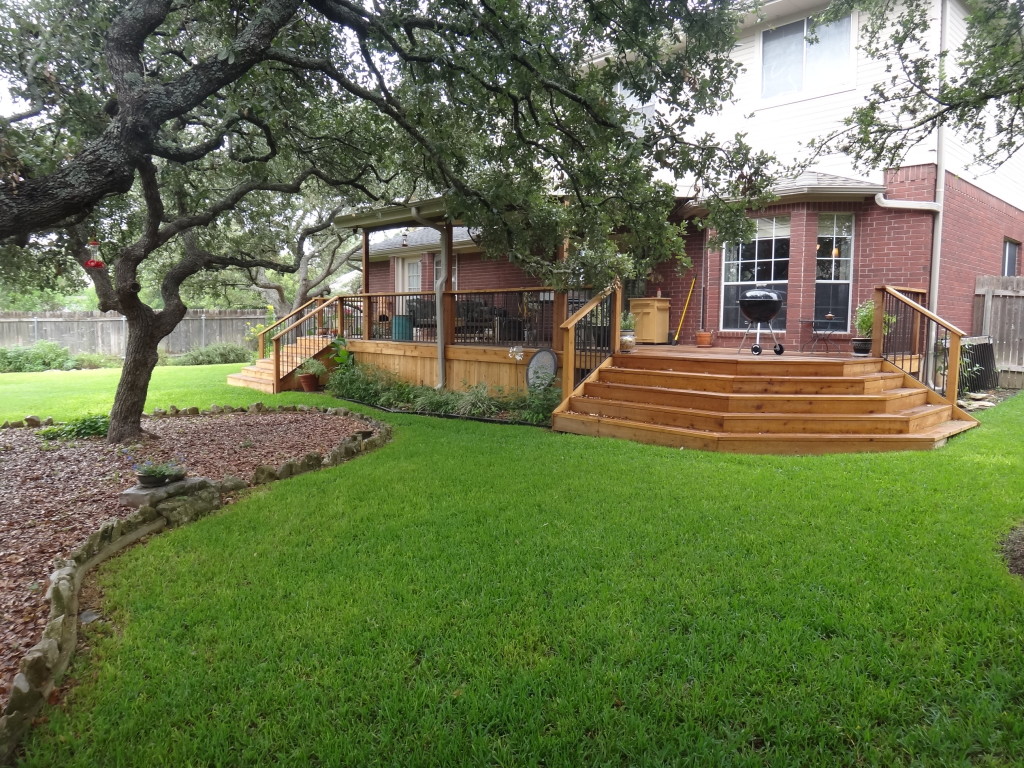
A visualization was generated to capture and communicate the design intent:
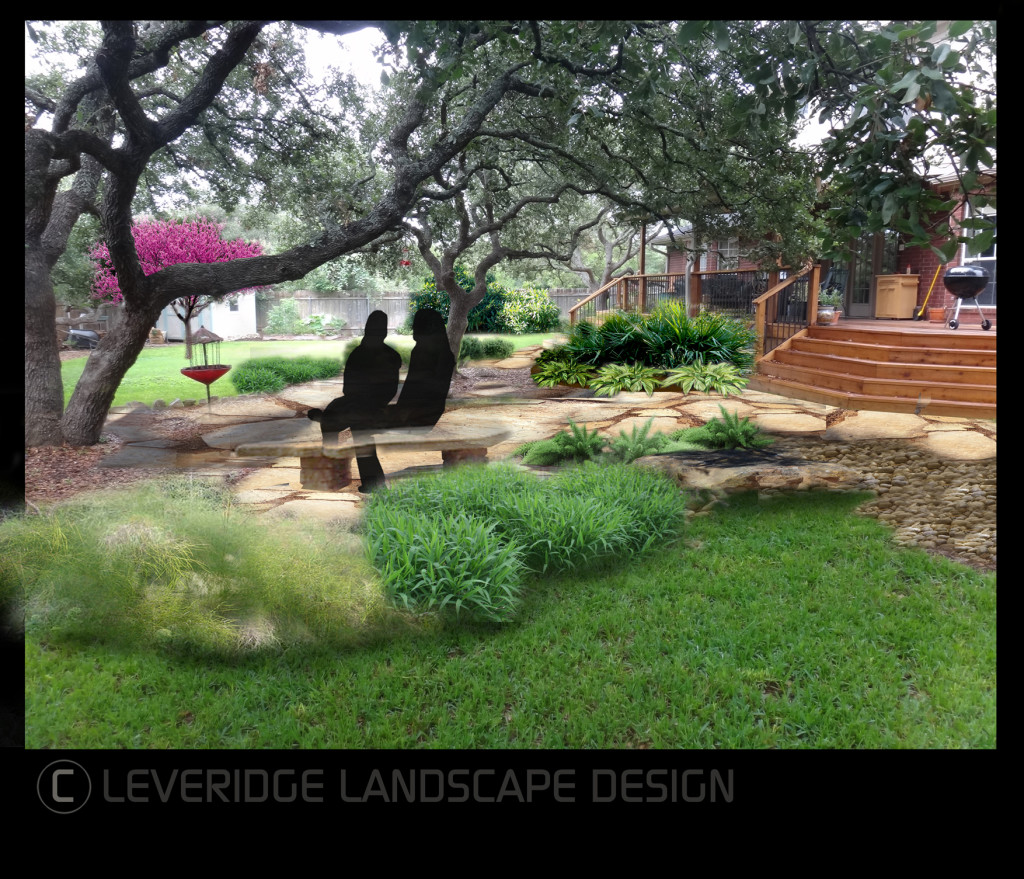
Over-sized Oklahoma flagstone was introduced to bridge the stairwells, creating an expanded central planting bed in the void between them.
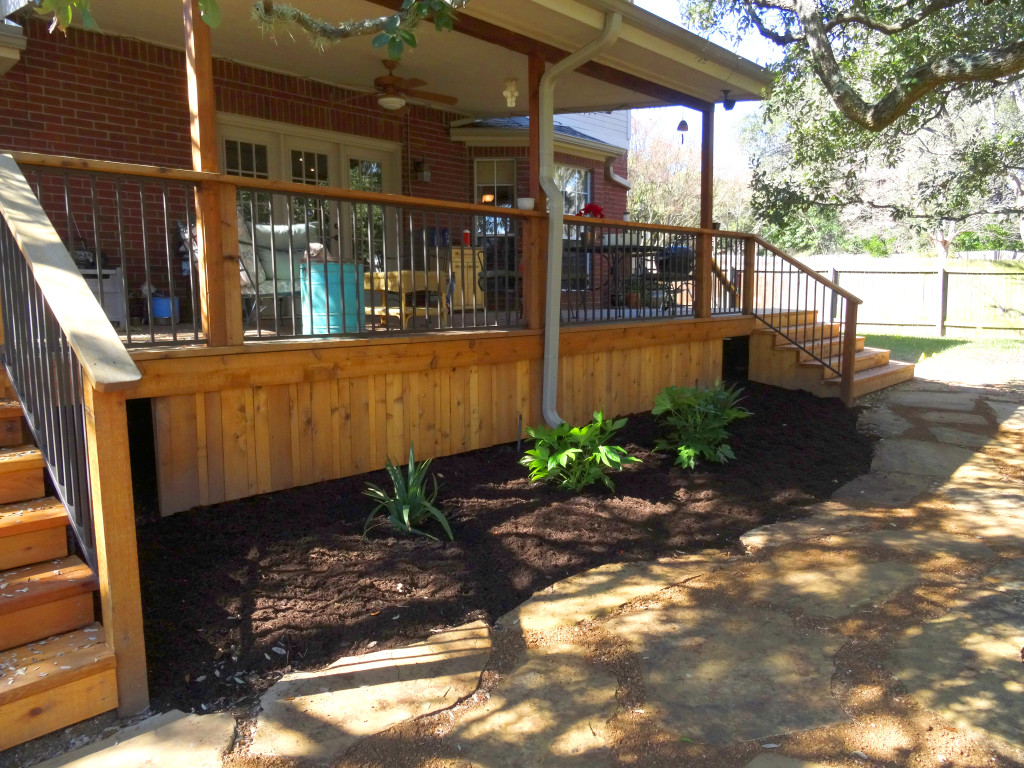
Here is the new layout before any planting:
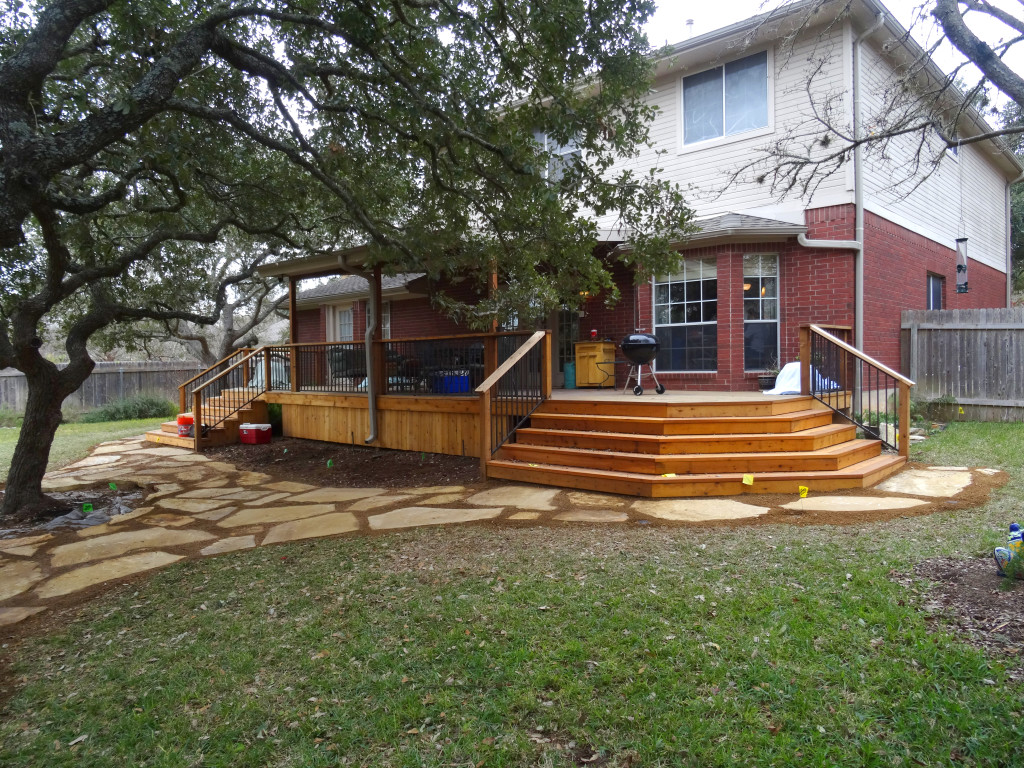
And looking the other way,
Before:
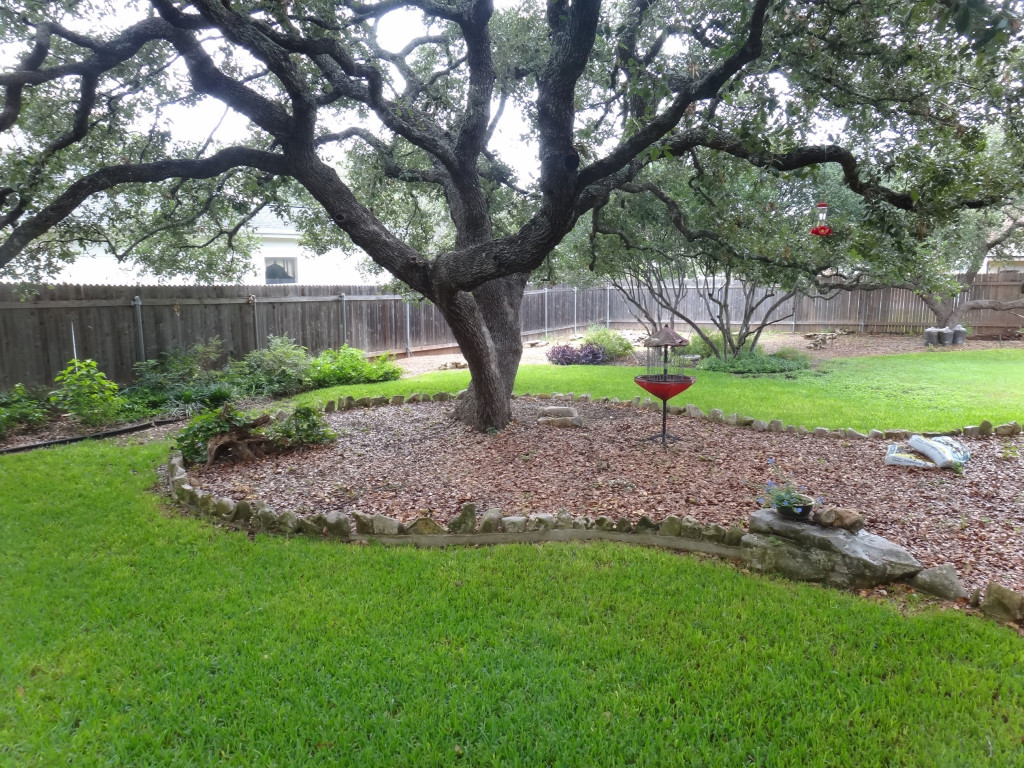
Visualization:
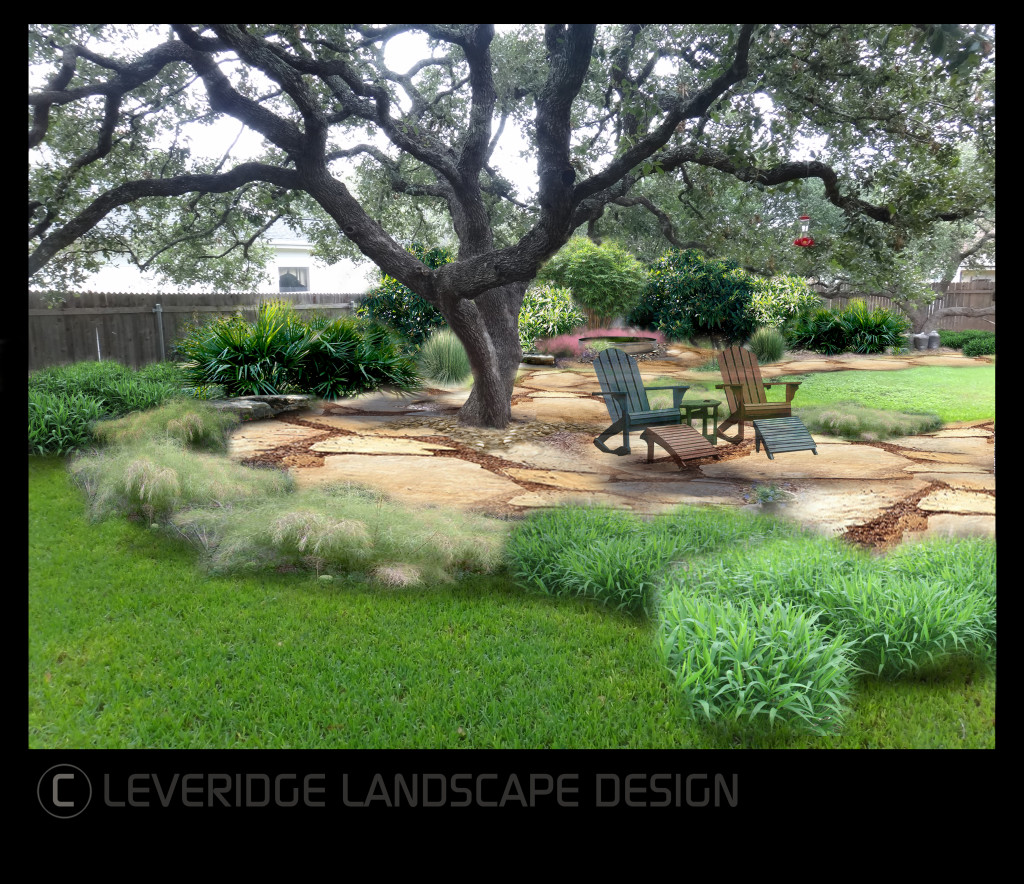
Installation:
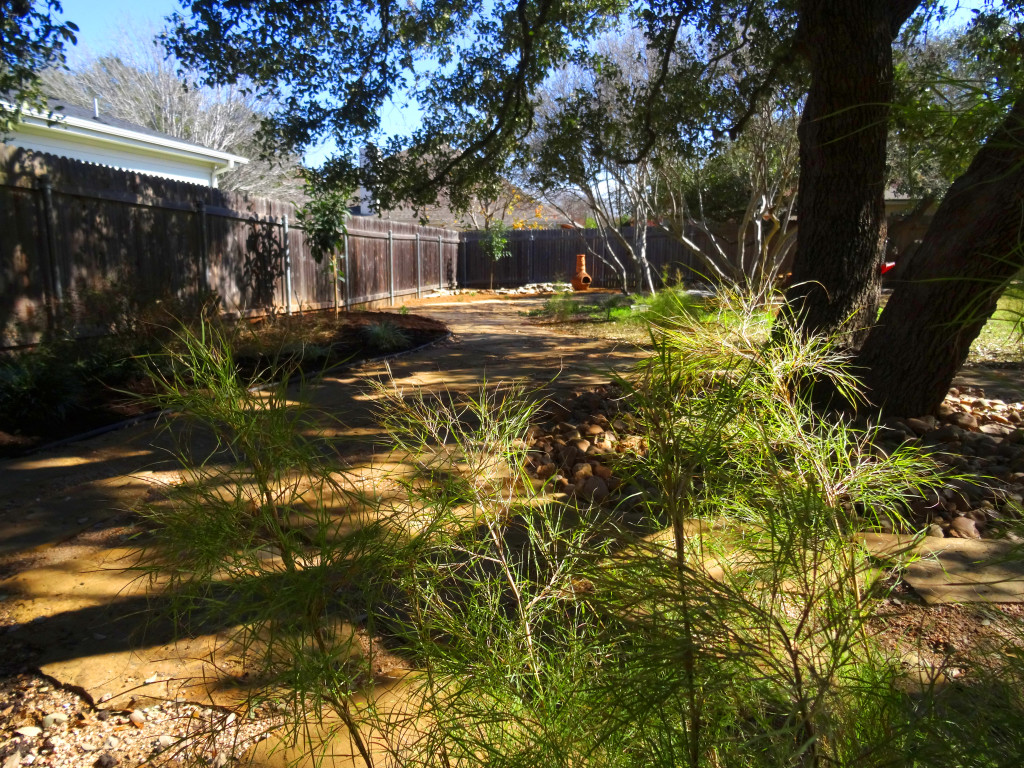
Fence-softening loquats and bamboo muhly grasses ease the transition between turf and flagstone. The new layout creates a flowing and naturalistic aesthetic.
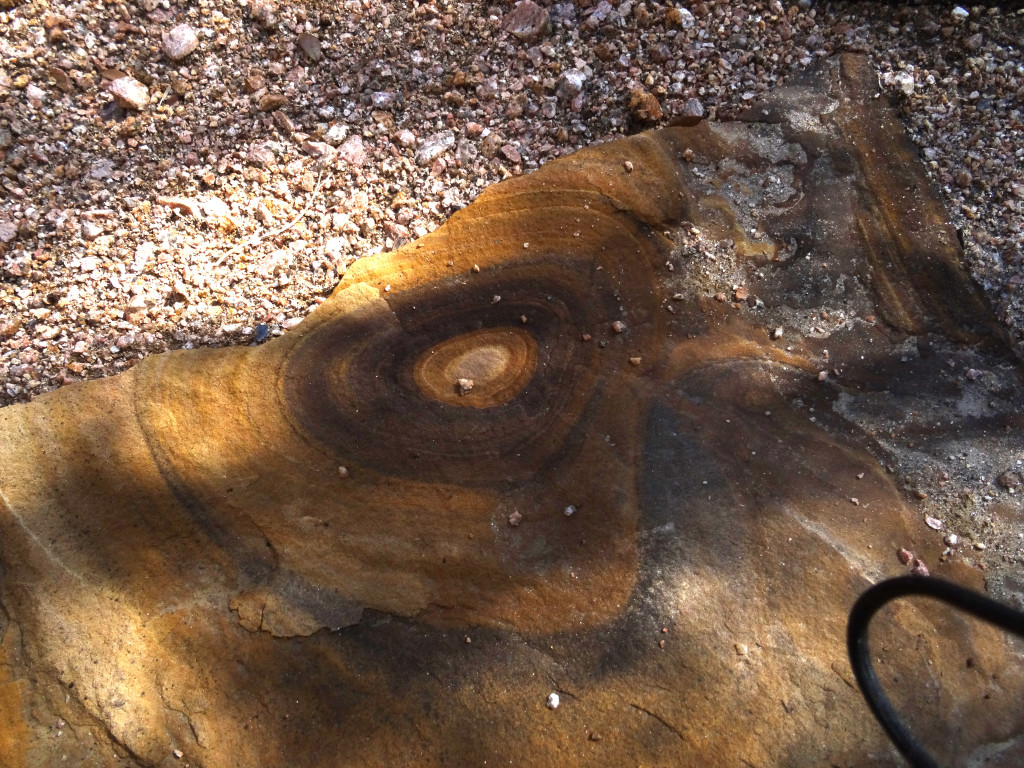
An intense stare from this piece of flagstone.
Back in the Patch…
…somebody had been sticking his nose where he shouldn’t,

through a corrugated metal fence of all things to fight with a pit bull.

The end result:

Fence / Napoleon complex: 7 stitches, Pit Bull: 0
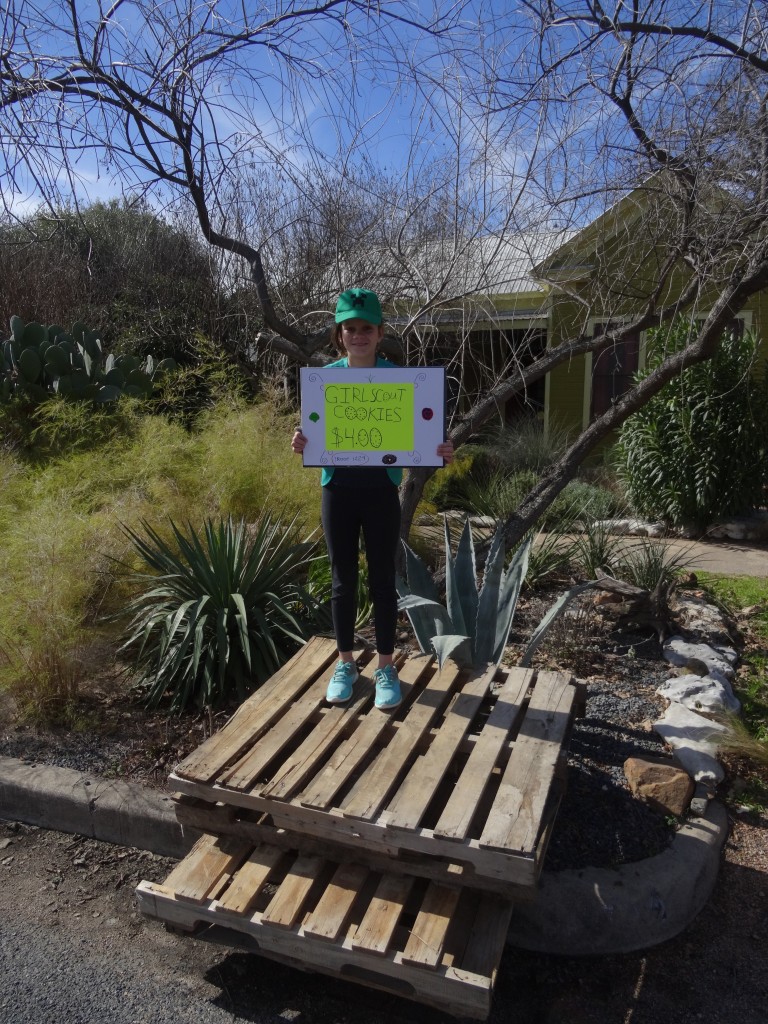
The cookies have almost gone for another year.
I knew those pallets would come in useful.
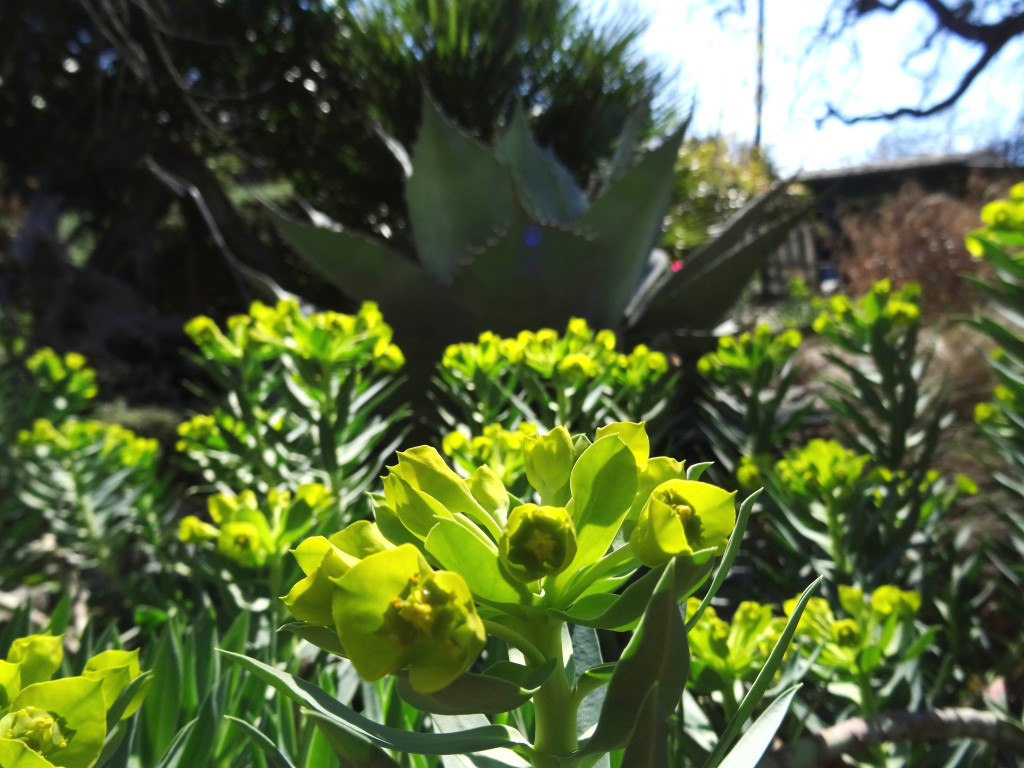
Gopher plants are in full swing,
Euphorbia rigida
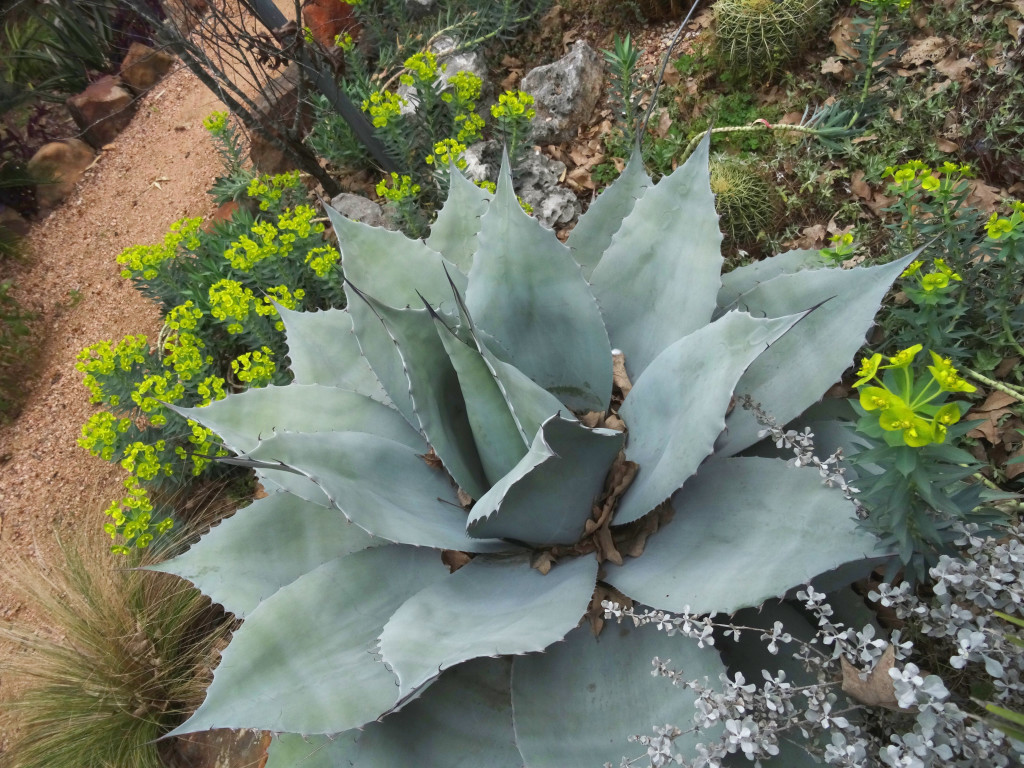
they look great around broad paddles and are particularly effective when weaving through edging boulders.
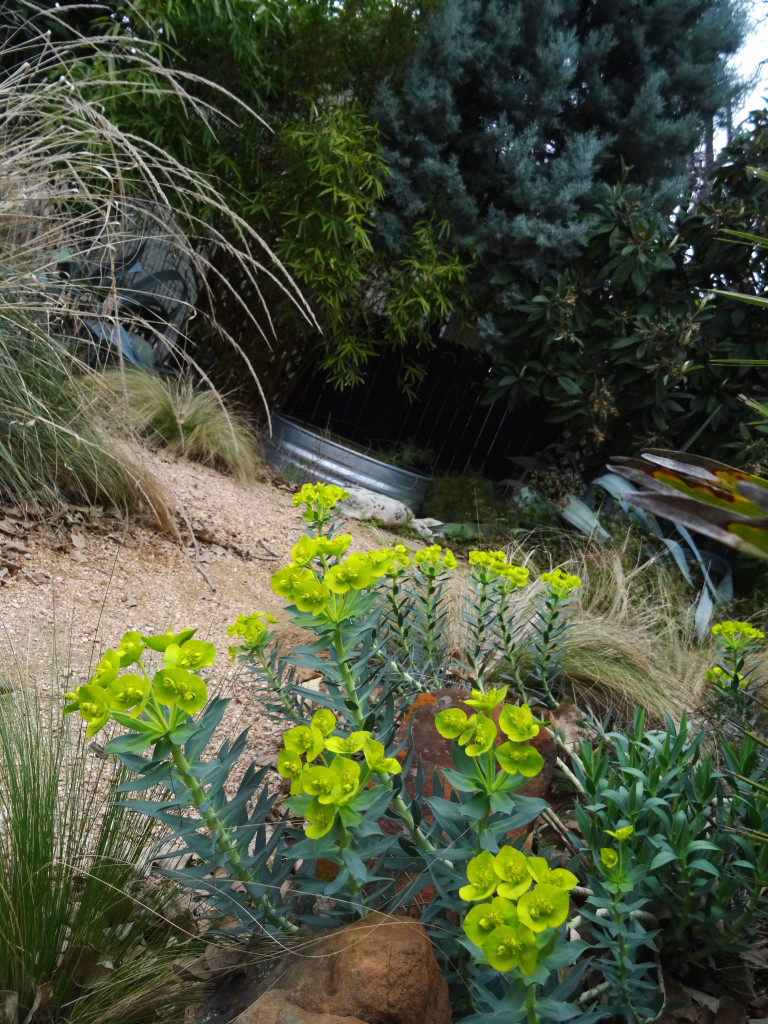
Fatsia Japonica have finished flowering and are now
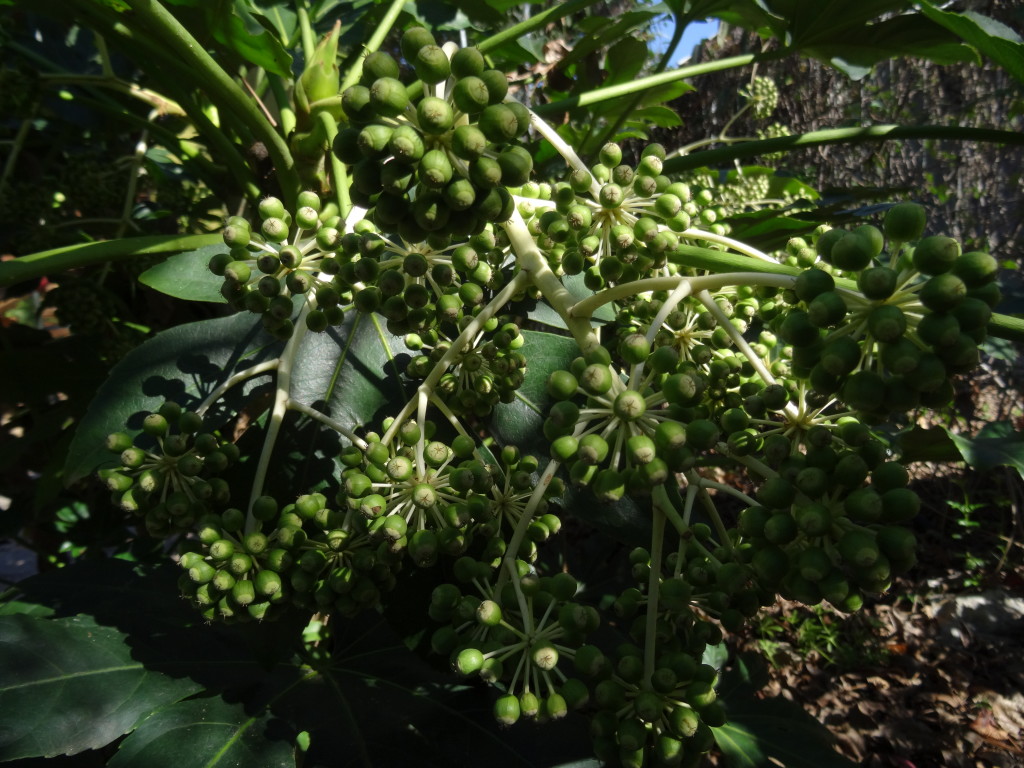
producing thousands of green berries.
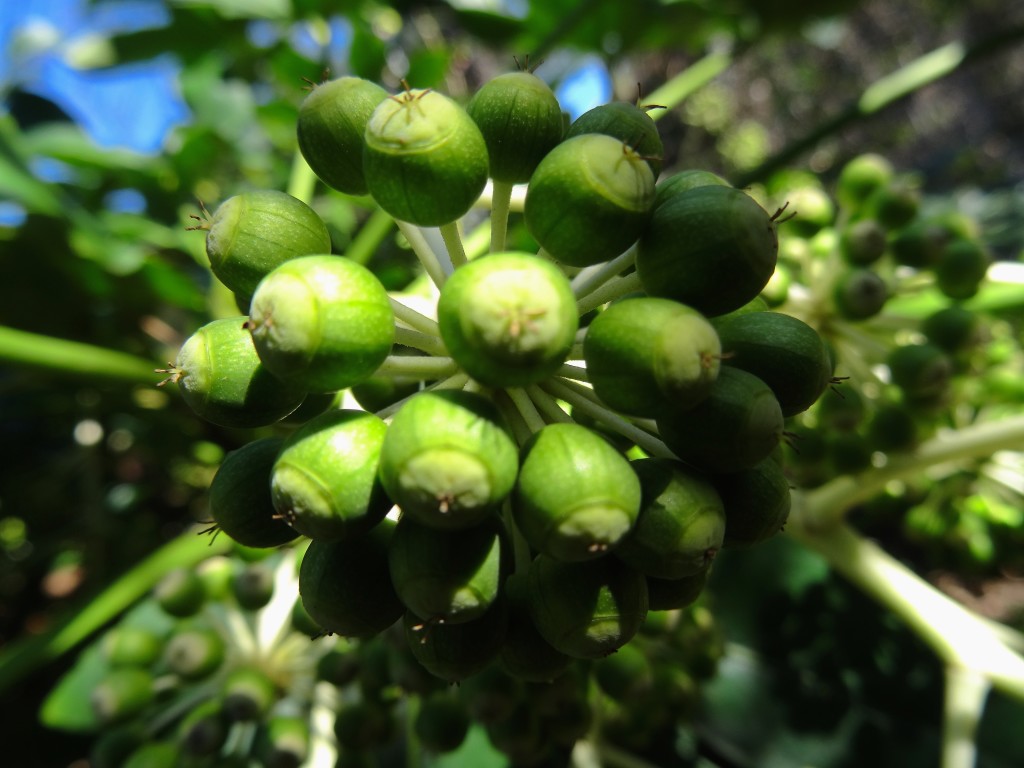
These will mature to shiny black as winter draws to an end, a great late winter feast for the birds.
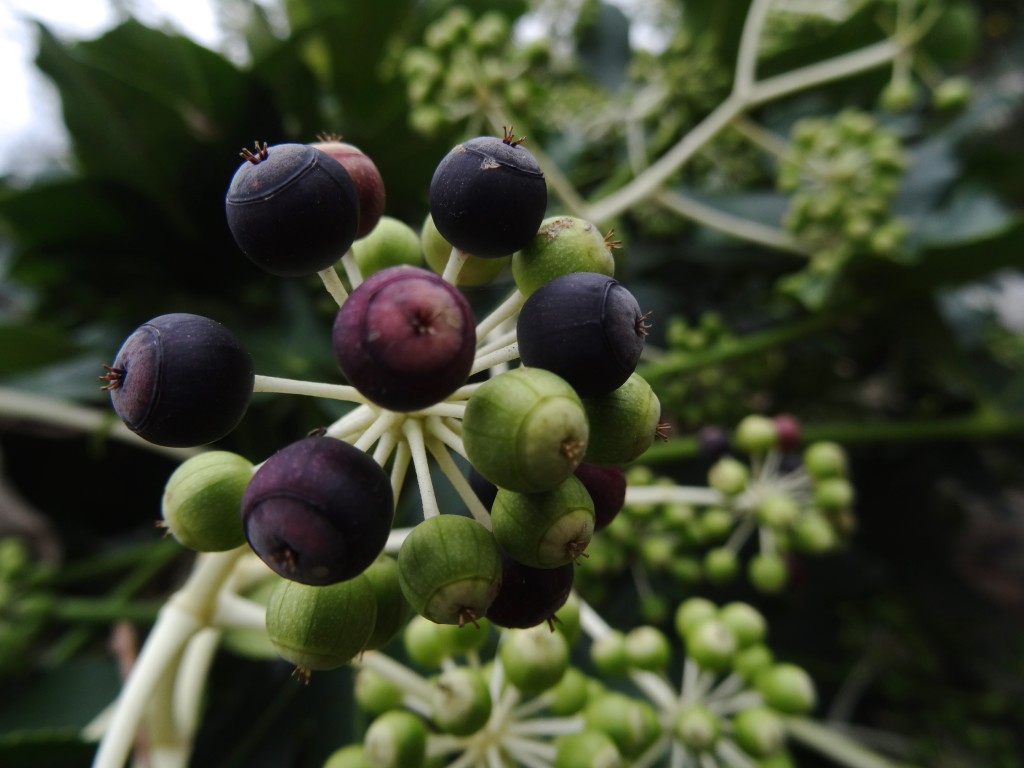

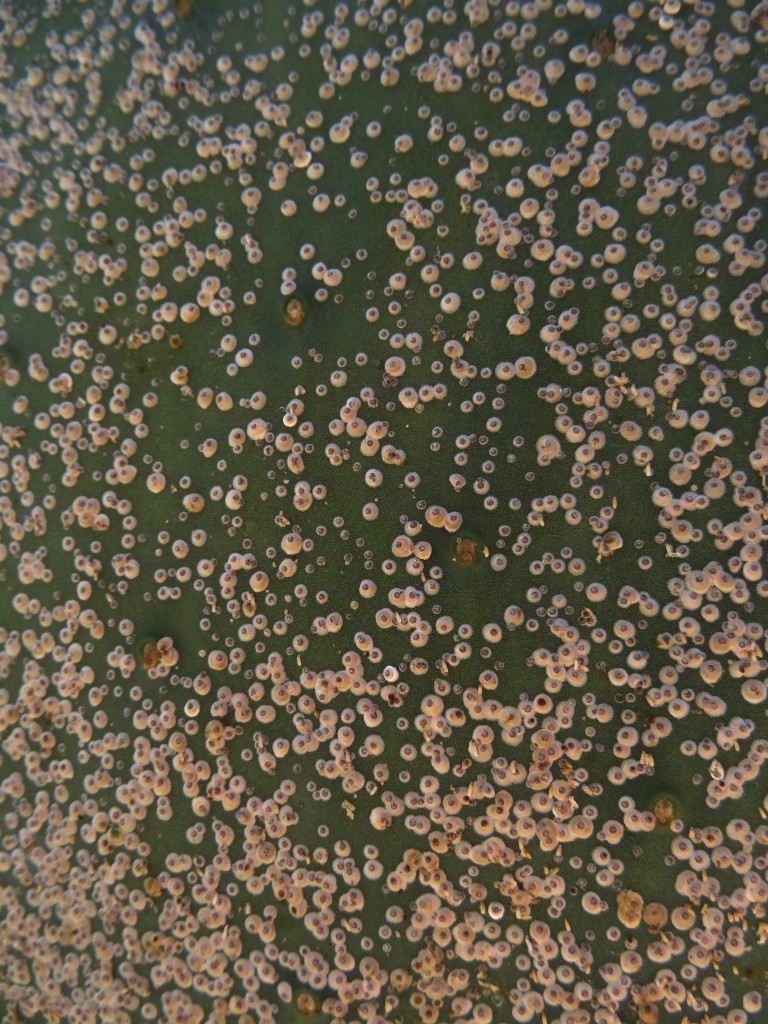

Now this is what I call an infestation!
I have this scale (Diaspis echinocacti) on two opuntia paddles.
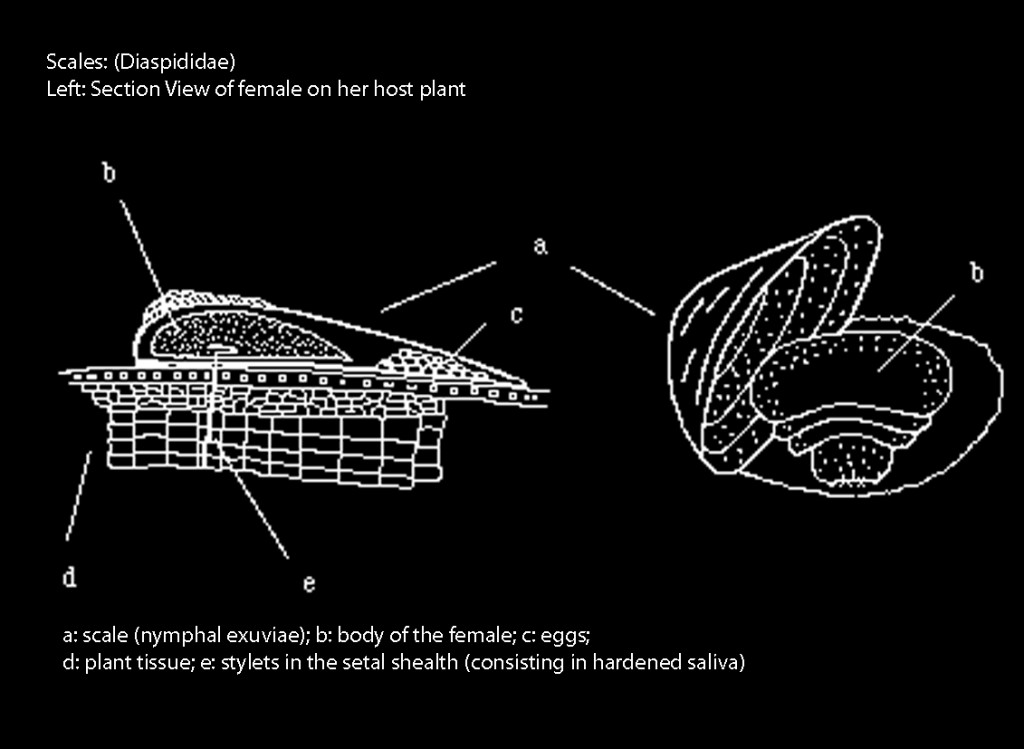
I had no idea how these tiny oysters functioned.
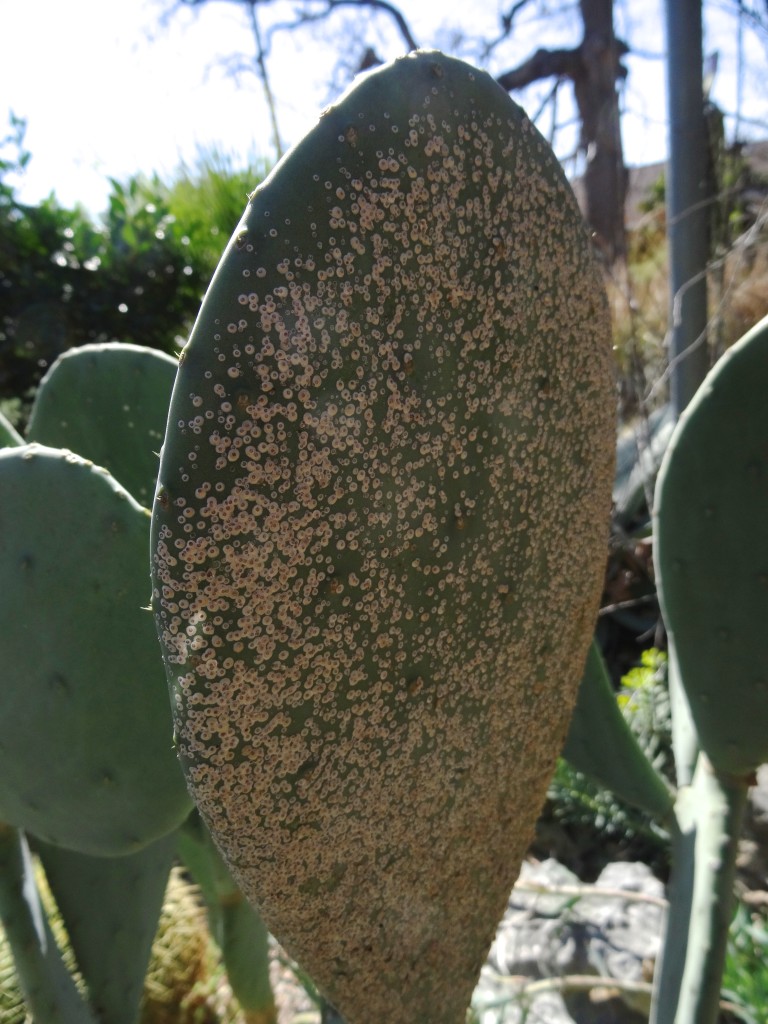
Treatment was easy…snap off infected paddle and discard.
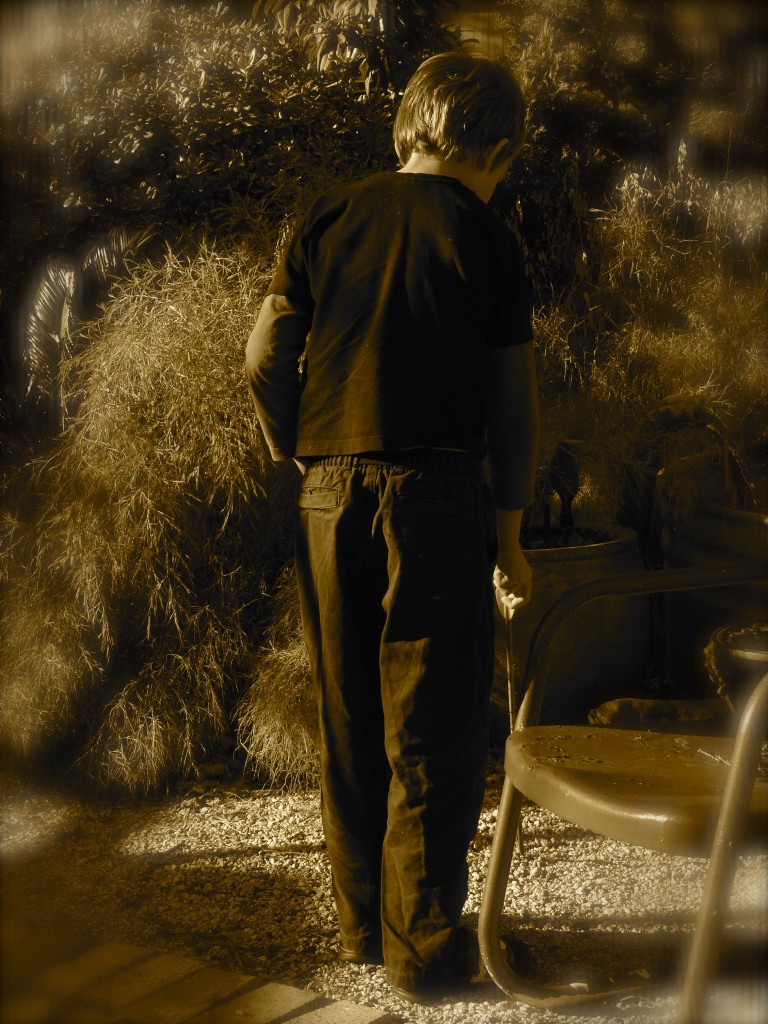
Stay Tuned For:
“Branching Out”
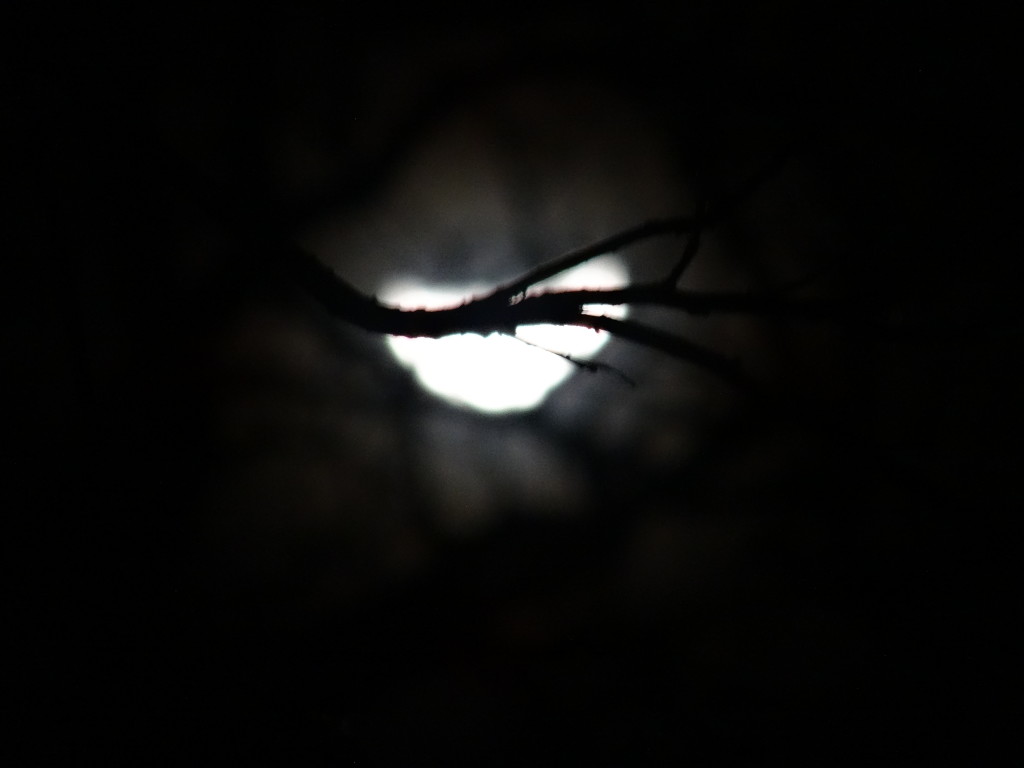
All material © 2015 for eastsidepatch. Unauthorized
intergalactic reproduction strictly prohibited, and
punishable by late (and extremely unpleasant)
14th century planet Earth techniques.

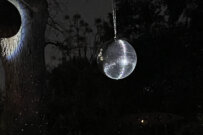





























































Comments on this entry are closed.
Very nice design, Philip! It’s essential to tie in the deck steps with paving, creating a purpose for and anchoring those beautiful steps. In your visualization of the rear-view, what are the two light-colored large shrubs (one is behind the Gulf muhly & pond)? Some sort of bamboo? And are those large Sabal minors on the left?
Hi Pam and thanks.
Agreed, joining the steps made a huge difference to the flow and feel of the space.
In the rendering I have a corner Alphonse Karr (pruned up) bamboo with a couple of loquats (left and right). The palm on the left is a needle but sabal minors would also work as a smaller variation. I used sabal minor and Fatsia Japonica in the bed between the steps.
Love the design. The difference is night and day. I’m sure the clients are loving it.
Thanks Laura.
Nice design!
Poor Kumo! Hope he’s recovering nicely.
Think we could use some of those gopher plants. Do they thrive in the summer?
Hi Gail.


Kumo is gathering fluff on his stitches at an alarming rate but healing fast.
Gopher plants are tough as nails, the only negative is the latex sap which can be a skin irritant, best wear gloves when cutting back.
Another great landscape by Leveridge Design. Damn that scale. It shows up every year but an easy solution to break the pad off. Thanks for the diagram of the little blighted.
Thanks Jenny.
It was interesting to find out how these little creatures function.
Great ideas – now the homeowners have reason to get out of the house, off the back deck and down into those beautiful spaces under their oaks. And extra good that you helped them get rid of a little more grass. Once they begin spending more time in those spaces perhaps other useful alternatives for their lawn, lawn and more lawn schema will begin to occur to them. WIth any luck they’ll be calling you back in before long to implement Phase 2!
(Poor K – hope his nose heals ASAP!)
Hi TD.
It really was an attractive environment under those great oaks, a great spot for a future hammock. There could definitely be a future phase 2 to this large garden and yes, if felt good to eat into and reduce the amount of turf.
Kumo is on the mend, I spared everyone the really gruesome gnarly shot…trust me my legs go weird just thinking about it :-) Brrr.
LOVE how you tied the steps in with the landscape. I also love that you used oversized flagstone. I wish more people would do that. Small flagstone tends to look really visually busy to me. Where did you source your stone? I am looking for a similar size without the orange for a project.
I only use oversized flagstone Lori. I usually have one or two ‘not so pretty’ pieces on a pallet that I smash to form the smaller filler pieces. The material is expensive and takes 3-4 people to move and muscle into position but the end result, in my opinion, is worth it. Being 2″ thick the flagstone cures into the DG and also becomes very stable…no concrete here!
I am always on the lookout for attractive stone, this batch I ordered from Custom Stone and it was brought down to Austin from the Dallas area.
I moved into my house just over a year ago. I have that same stupid crap in my back yard. How does anyone think it looks attractive? I even have the same edging. I’ve been digging that up to put up against the fence where my dogs and the neighbors dogs try to dig to each other. So far it has been pretty effective.
Sorry to hear that Shirley but glad you are digging it up and putting it to a more effective use :-)
Edging can look really bad especially when it looks unnatural and is not fitting with the scale of the area. I usually try to use stone or boulders to separate materials / aggregates, it looks more natural and after all, you don’t find to much plastic and metal edging in nature.
No,no,nooo!
Love that picture with the oversized flagstone and the dark gravel mulch. It’s really lovely how the DG and the dark gravel complement the tones of the flagstone.
Just leaving you a note to say that I think this is my favorite installation of yours. I had to hunt it down so I could show it to some friends. It’s so awesome. I still covet that oversized flagstone & love that the flagstone patio extension goes right under the tree almost up to the trunk, rather than around it to make an island bed in the middle, which is what I think most people would do. It really shows off the form of the tree and takes the greatest advantage of the shade for seating. And if they put lights on the tree, it’d be such a fun place to sit at night.
Thanks Lori and yes, lighting WOULD look great under there.
Hello, I want to request you an authorization to use the schem of female cactus scale in an apresentation at college.
The schematic image is not mine, I think I got it off wiki?